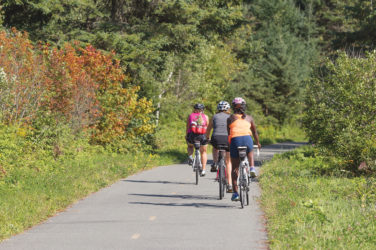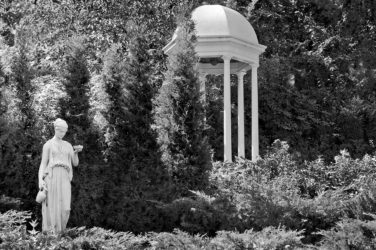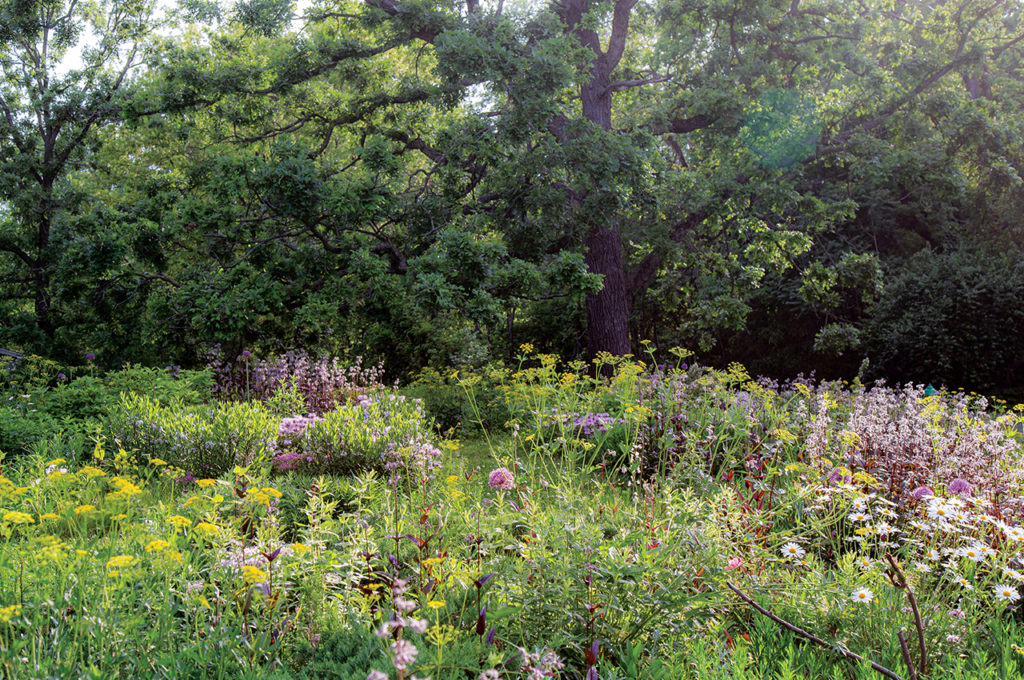
Late May in the front yard meadow prominently features Penstemon digitalis “Pocahantas,” a pink-flowered form of the Midwest native beard tongue, along with dozens of other perennials.
Writer and photographer: Kelly Norris
In 2017, I crossed the important life threshold of homeownership, purchasing a 1941 Colonial Revival home on Des Moines’ north side. In reality, I bought a garden and a place to sleep. The garden wasn’t much more than a foundation planting and a half-acre of turf, but I saw the potential to stitch my artistic intentions with ecological conscience. In the last four years, I’ve begun a series of interventions with place. My garden is a laboratory for curiosity and a studio for expression. This patch atop a hill over the Des Moines River isn’t merely an aesthetic endeavor, but rather an odyssey with place.
I call the garden Three Oaks in homage to three stately trees that define the canopy: two bur oaks, affectionately nicknamed Big Bur and Little Bur, and a black oak that marks the curb where the driveway meets the street. Big Bur and the black oak date to the time the house was finished. Little Bur was purportedly planted in the 1980s.
As a gardener who practices in ecological art, I’m planting for life over the long haul. Garden habitats are complex, regardless of the creatures they comfort, and ecological processes inherently involve time, a cadence of change over years. Yet, in a relatively short period, the transition from this lot into something more than turf has been dramatic. In the fall of 2020, I observed 12 species of warblers migrating through the property, alighting the hackberry trees to devour the oily blackberries.
With house renovation still in progress, I set about planting my front yard meadow on Labor Day weekend in 2017. Trained in horticulture and design, I wanted the garden to feel well-situated in my neighborhood and in relation to my home. Blessed with the canopy of oaks to frame the street view, I conceived a loose and unselfconscious meadow abounding from the former rectangle of lawn sandwiched between the house and street.
The notion of a front yard meadow has been variously characterized as brave and defiant. It shakes the traditional, Jeffersonian norm of the front yard as a conformative tableau. Yet I wasn’t striving for heroism as much as I was making a statement about who I am and how I welcome others to my home. The front yard is a doormat to my domain. Why settle for the sterility of turf and hedge when you could offer your neighborhood something beautiful?
Four years later, the garden offers new alchemy daily. Vignettes blur in and out of focus with the changing seasons. The restless gardener-artist redrafts the canvas a little each year as interests wax and wane. Neighbors stop to talk, curious about what’s in bloom and a little more of the story. The story, of course, is always unfurling, a botanical tale of wonderment and awe.
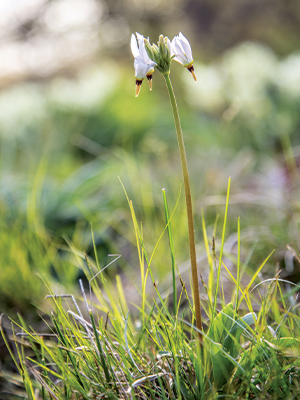
Dodecatheon meadia (shooting star).
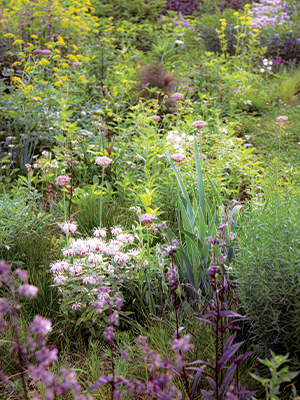
A vignette from the front yard meadow.
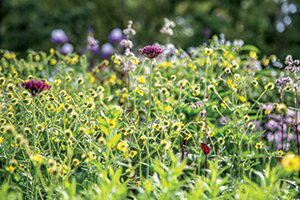
Allium atropurpureeum (ornamental onion) floating through Geum macrophyllum (big leaf avens).



